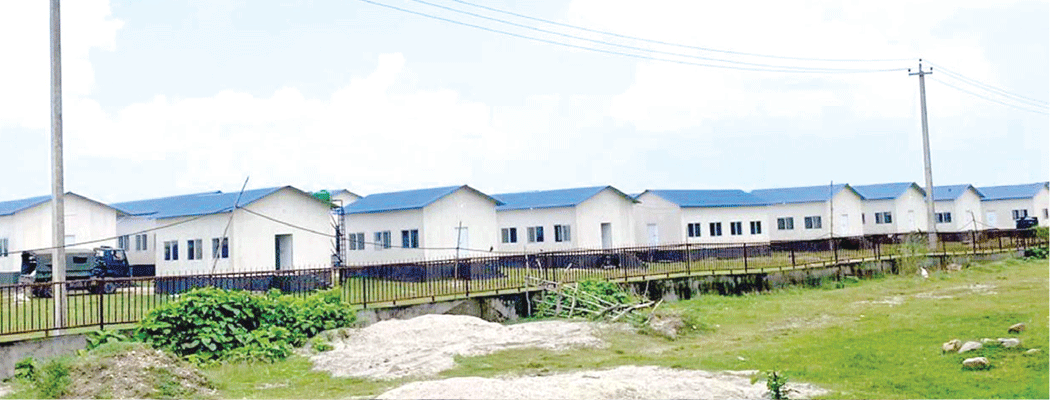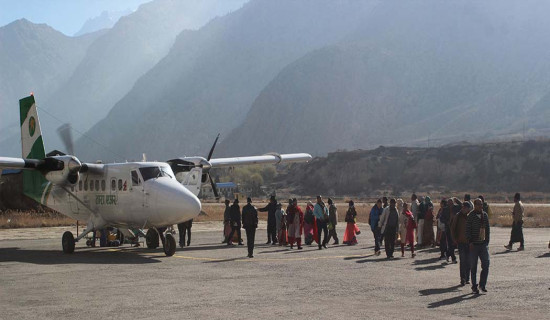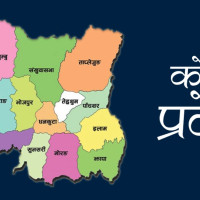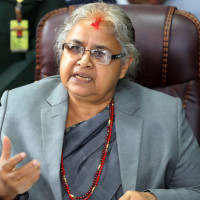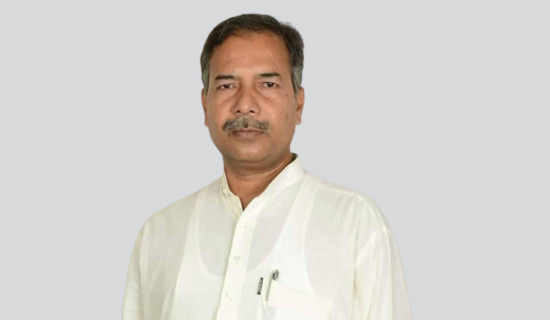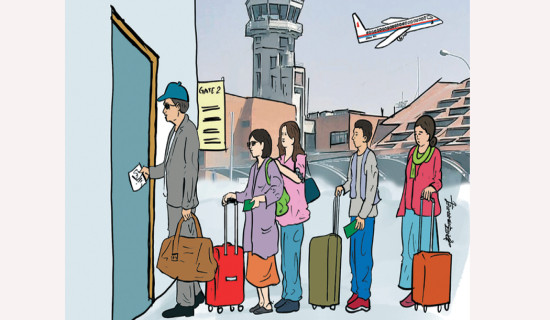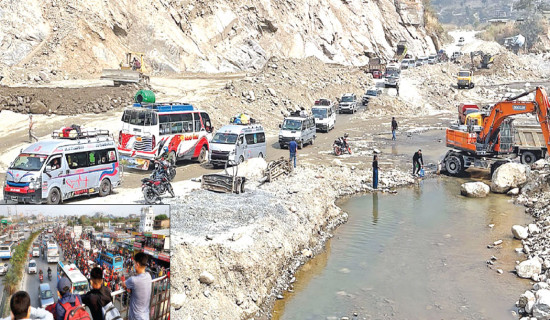- Thursday, 25 December 2025
Holding centres lie empty in lack of operation modality
Kathmandu, Feb. 26: Almost seven months have elapsed since the completion of the construction of holding centres nearby the border points of all seven provinces that were initially meant for holding, diagnosis and treatment of people infected with COVID-19.
The holding centres, built under the supervision and monitoring of the Nepali Army at a total cost of Rs. 2 billion of the federal fund, are now in almost abandoned and unused state.
Although, the construction works completed some seven months ago, now they have been handed over to the Nepali Army by the contractor company, mainly Hanuman Construction Pvt. Ltd., which had built five holding centres, and two by the army itself.
The federal government had entrusted the construction of these holding centres to the army that were later completed through the tender process awarding the task to the private sector, and so did the private sector, later on, handed it over to the army.
The construction of the holding centres built at Mechinagar-14 of Duwagadi in Jhapa was supervised and monitored by Srinath Battalion. However, due to confusion as to who should the holding centre be handed over to, it could not be done for up to three months, said the then field in-charge Sabin Bhattarai of the Hanuman Construction Pvt. Ltd. Bhattarai, recalling those days, said that the project could not be handed over even three months after the completion. Initially, when the budget came late, the work also began late, he said.
He said that the holding centre built at Mechinagar-14 lies about 14km south-west from the eastern border of Kakadbhitta. According to Bhattarai, 22 small buildings that can accommodate up to 1,000 people, with beds, oxygen supply, electricity, etc., were set up there at a cost of around Rs. 280 million. More than 20 infrastructures with at least 1,000 beds facility have been built in a particular location of each holding centre, Defence Secretary Kiran Raj Sharma said.
“Since these structures were built at a time of need, the Ministry’s view is that they should be used properly at the right time,” Secretary Sharma said.
“The holding centres which are now all under the direct and indirect supervision of the infrastructures should have been handed over to the federal government as of now. But it could not happen so citing various technical reasons,” Brigadier General and Spokesperson of the Army Nepali Krishna Prasad Bhandari told
The Rising Nepal.
Currently, at least 95 troops are deployed for its daily management.
Even the government officials of the concerned ministry conceded that the holding centre constructed and made ready for its operation and management could not be owned by the government themselves in time due to various reasons.
“In the second quarter review of the current fiscal year held just three weeks ago, we also raised the issue about the modality authority to hand over the holding centre , but till now, we have not received any response from the government ,” said Bhandari.
One concreted decision has not been made whether the holding centre will be run by the local government, the federal government or the army itself or bring it in use for the operation of customs office at the border points, he said. “We are ready to hand over the infrastructures to the government and for this, we are waiting for the Cabinet or ministerial level decision in this regard,” said Bhandari.
Confusion to hand over
holding centres
Meanwhile, Joint Secretary and Spokesperson for the Ministry of Defence Prakash Paudel said that a committee has been formed regarding the operation and management of the constructed holding centres under the coordination of Joint Secretary Baburam Adhikari of the Ministry, who is also the head of the Planning and International Coordination Division, and that committee has just finished the report preparation task.
See Page 6
One representative each from the Office of the Prime Minister and the Council of Ministers, Joint Secretaries of the Ministry of Home Affairs, Health and Population and high-ranking official of the Army will be as members of the committee.
“So far as I know, the report of the committee has not specifically recommended the government to take specific decision regarding its operation and management,” said Paudel.
Looking at the current situation, it seems that these holding centres will be operated under the federal government, he said. “It is not possible for the local government alone to manage and operate this right away, he claimed.
“The operation and management of these holding centres also could not be given solely to Nepali Army because army cannot remain there at the border points legally for a long time constitutionally,” said Paudel.
Sooner or later, its protection and management should be given either to Nepal Police or Armed Police Force until the government takes a concrete decision, claimed Paudel.
Even at the Defence Ministry’s second quarterly progress review meeting held on February 4, Vice-chairman of the National Planning Commission Dr. Min Bahadur Shrestha stated that these structures can be used for training and skill development purpose for youth who are going abroad or work in industrial security.
If the said centres are not utilised in time, unnecessary financial burden will be added to the state in their operation and management, said Dr. Shrestha.
Even though the construction has been completed, the Defence Ministry officials have said that the work related to wiring, power supply, water supply and road are necessary to bring the holding centre into operation.
“Holding centres established by the government in different provinces of the country should not be kept non-function, rather they should be given to Armed Police Force or Nepal Police to carry out their daily works until the government takes one final decision,” said Purushottam Thapa, Deputy Inspector General and Spokesperson for the APF, Headquarters.
During the surge of the COVID-19 infection, the government had started constructing holding centres mainly at Mechinagar, Charaali of Jhapa, Biratnagar in Morang, Birgunj in Parsa, Krishnanagar in Kapilvastu, Nepalgunj in Banke, Gauriphanta in Kailali and Bhagatpur in Kanchanpur. The construction of most of the holding centres began in June, 2021 and was completed just seven months ago.
“As the question about their operation and management of the infrastructure remains unanswered, the liability related to managing proper electricity and drinking water is increasing day by day,” said Rabindra Dhanuk, retired AIG of Nepal Police, who had seen the situation of the holding centres, just before his retirement few months ago.
The holding centres were hastily constructed with the aim of just fulfilling the responsibility and with just the aim of accommodating COVID-19 infected people, said Dhanuk.
“The building can be used for relief materials, equipment, food storage and health centres during disasters, including various infections, heavy floods and inundation in Terai,” opinioned Dhanuk.
Which cost how much?
According to the costing details provided by the Nepali Army, the total cost of all the constructed holding centres reached Rs. 2.01 billion.
According to details, it cost Rs. 280 million to construct holding centres in Mechinagar of Jhapa, Rs. 280 million in Birgunj of Parsa, Rs. 281 million in Bhimduttanagar Municipality-18 of Salghari of Kanchanpur, Rs. 293 million at Bhabaniyapur of Nepalgunj Sub-metropolitan City-14 of Banke.
Similarly, it cost Rs. 289 million to build the holding centre at Jogbani border of Biratnagar in Morang, Rs. 267 million in Krishnanagar of Kapilvastu, and Rs. 288 million at Trinagar of Dhangadi in Kailali district. Among these holding centres, two holding centres of Mahendranagar in Kachanpur and Nepalgunj of Banke were built by the Nepali Army itself with their manpower. However, five others were built by Hanuman Construction Company.

